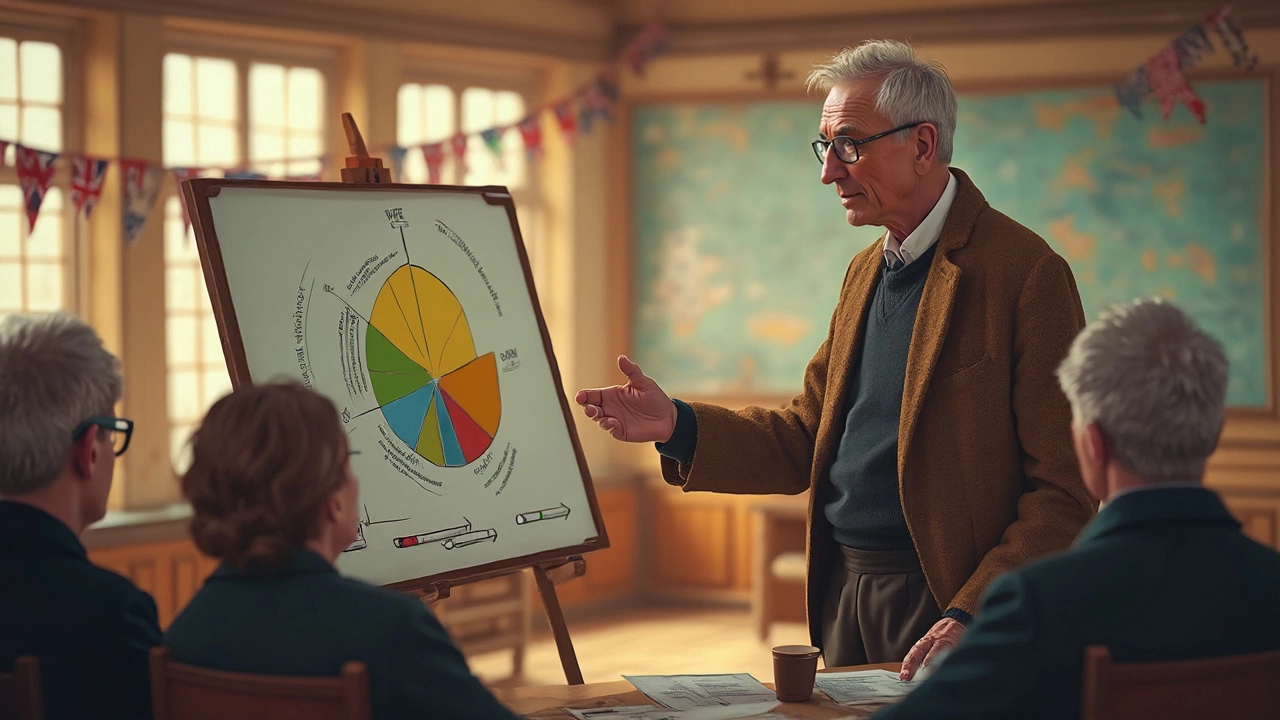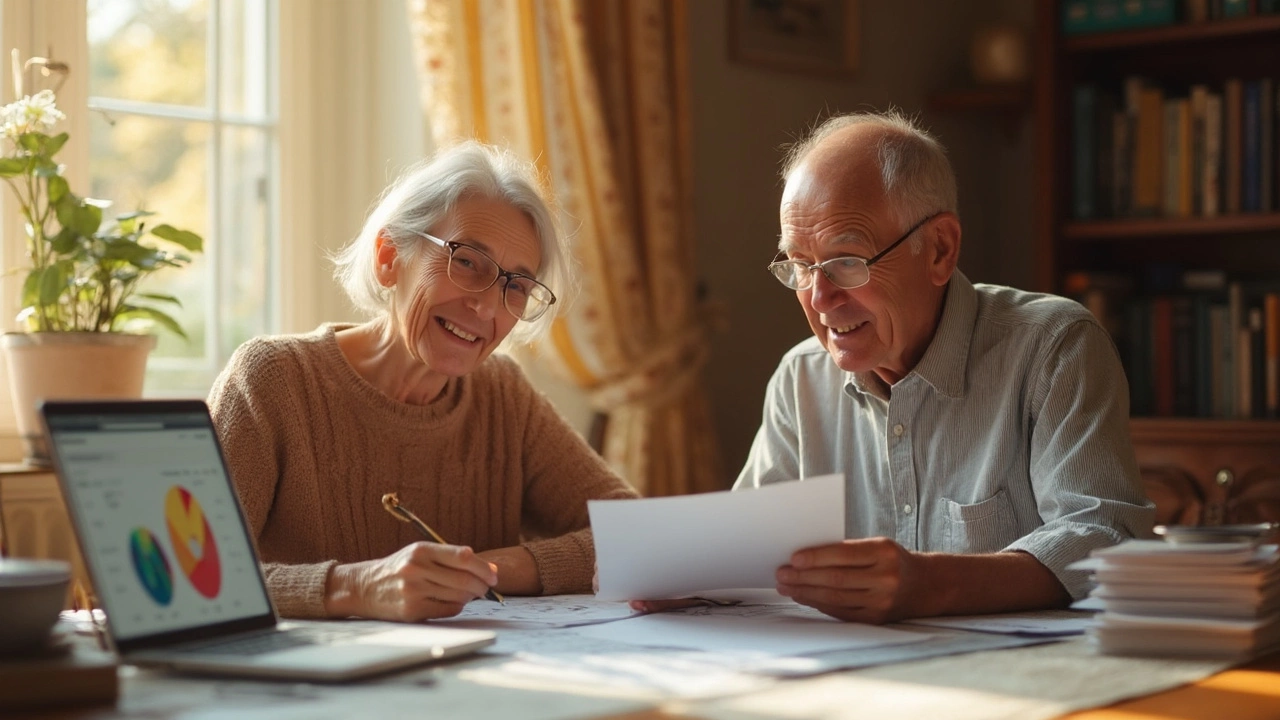Turning 70 changes how you need to think about your money. At this age, the old advice about taking big risks doesn’t really fit anymore. Most people want their money to last, cover health care, and maybe even help their grandkids out somewhere down the line. At the same time, letting your savings just sit and do nothing isn’t a good strategy either—hello, inflation.
Figuring out the right mix of investments can feel overwhelming, especially when you’re bombarded with pie charts and stock tips you never asked for. What actually matters? Safety, yes—but you still want your money to grow enough to keep up with the cost of living. Most financial experts now say you don’t have to dump every last stock from your portfolio just because you’ve hit 70. You need a mix, but what’s the right recipe?
If you’re worried about outliving your money, you’re not alone. A lot of folks are surprised to hear that even at 70, some stocks still make sense! But obviously, your safety net—things like bonds, CDs, and cash—should play a much bigger role now than in your 30s or 40s. Big investment firms like Vanguard and Fidelity publish updated model portfolios for retirees every year, and they’re actually pretty similar: about 40-50% stocks, the rest in bonds and cash. Not what most of our parents heard growing up, right?
- What Really Matters for a 70-Year-Old’s Portfolio?
- How to Balance Safety and Growth
- Common Portfolio Mixes (With Real Numbers)
- Mistakes to Dodge and Tips That Work
What Really Matters for a 70-Year-Old’s Portfolio?
Health, cash flow, and the need for peace of mind top the list when thinking about how to build a portfolio for seniors. At 70, the days of high-stakes investing should be behind you. Now it’s about making sure your money actually lasts, pays for your real-life needs, and lets you sleep at night—nothing flashy required.
Most people at this age need to focus on three things: keeping steady income, protecting what you’ve worked for, and growing your money just enough to outpace living costs. Social Security, pensions, and personal savings usually make up the bulk of cash coming in. If you start dipping into savings, you want the withdrawals to feel as safe and predictable as possible. Rule number one: don’t put all your eggs in one basket. Diversification isn’t just a buzzword here—it’s the best way to make sure an unexpected event doesn’t derail your plans.
Your health and lifestyle matter a lot, too. Maybe you have bigger medical bills or travel plans, or you want to help family members. Planning for at least 20 more years isn’t out of the question for many 70-year-olds today—people are living longer than ever. That means your investments need to go the distance, not just sit in cash waiting for you to spend down in a few short years.
- Keep enough cash in savings to cover at least 1–2 years’ worth of expenses. This buffer can save you from having to sell investments in a bad market.
- Look for steady, lower-risk bonds or bond funds. These can help pay regular income and add stability.
- Don’t avoid stocks completely—just make them a smaller slice of your pie. Even 30% in stocks is not uncommon for healthy, active retirees.
- Watch out for big fees, complicated products, and anything someone’s “guaranteeing” with fine print.
The bottom line? Your portfolio should fit who you are today, not who you were a decade or two ago. If you’re up at night worrying about your money, it’s probably a sign your portfolio needs a fresh look. Practical, not perfect, is the name of the game now.
How to Balance Safety and Growth
It’s tricky—striking that balance between keeping your money safe and making it work for you. If you lean too far into "safe" stuff like cash or savings accounts, inflation can eat away at your buying power. But swinging too hard the other way, piling into stocks, might leave you vulnerable right when you need stability the most.
Experts at Vanguard and Fidelity usually point folks in their seventies toward something like 40% to 50% stocks, with the rest in bonds and cash. This mix gives you some protection if the market drops, but still offers enough growth to keep up with rising costs. Here’s what that balance might look like:
| Asset Type | Common Allocation (%) |
|---|---|
| Stocks (equities) | 40–50 |
| Bonds | 40–50 |
| Cash & CDs | 10–20 |
Retirement investing isn't about chasing the hottest stock tips. It’s about making your money last, and keeping up with real-world expenses. The idea is, your stock portion brings growth and outpaces inflation, while your bonds and cash make sure you can cover bills during bad years in the market.
It’s not just percentages on paper. If you’re in your seventies, the numbers above can help you set up actual accounts: a mix of dividend-paying funds for steady payouts, government or high-rated corporate bonds for income, and enough cash spread in high-yield savings or CDs to handle at least 12–24 months of expenses. Why this much cash? Because if the market crashes, you don’t want to be forced to sell your stocks at the worst time.
Tracy Edwards, a retirement planner at Charles Schwab, puts it like this:
“The right portfolio for a 70-year-old should let you sleep at night. It needs to give you cash for living today but still enough growth so you’re not worrying about running out of money at 85 or 90.”
Don’t forget to adjust for your real life. Do you have a pension? Are you relying just on Social Security? Or are you also helping out grown kids? These things might mean you lean a bit more safety—or tilt toward growth—than the table shows.
Quick tip: Automating withdrawals, like setting up a monthly transfer from investments to your checking account, helps avoid emotional moves during a market slump. It’s okay if the "perfect" balance for you is a little different from your friend’s—your needs are unique.

Common Portfolio Mixes (With Real Numbers)
If you’re trying to figure out what an actual portfolio for seniors looks like, you’re not alone. There are tons of sample blends out there, but here’s what some of the big names recommend for a 70-year-old in 2025. It’s not just about being safe—these portfolios help your money last while still giving it a chance to grow.
Check out these example mixes:
- Vanguard Retirement Portfolio (Target Age 70): About 40% stocks, 50% bonds, and 10% cash. Vanguard suggests keeping some in international funds too, not just U.S. markets.
- Fidelity’s Moderate Income Portfolio: Suggests 35% stocks, 50% bonds, and 15% cash or short-term funds. They lean a bit safer with slightly more cash for emergency needs.
- Charles Schwab’s Moderate Allocation: Recommends 40% stocks, 55% bonds, and 5% cash. Their mix also includes a chunk of high-quality, short- to mid-term bonds to guard against market swings.
Here’s a head-to-head look at these three sample mixes:
| Firm | Stocks (%) | Bonds (%) | Cash (%) |
|---|---|---|---|
| Vanguard | 40 | 50 | 10 |
| Fidelity | 35 | 50 | 15 |
| Schwab | 40 | 55 | 5 |
Notice how all of these portfolios keep stocks in the 35–40% range. That’s because some stock ownership helps fight inflation and keeps your savings growing so you don’t run out of money if you live well into your 80s or 90s. The bigger slice, though, goes to bonds and cash—these give you stable payouts and a cushion when the market freaks out.
If you want something very low stress, you can go heavier into U.S. Treasuries, CDs, and other government-backed bonds. Some people like the simplicity of using just a handful of index funds to cover stocks and bonds. If you’re still working part-time or have a solid pension, you might be able to afford a bit more risk on the stock side.
And for the DIY folks: most people stick to these three buckets—stocks, bonds, and cash—because it’s simple, easy to track, and proven to get the job done. No need to chase complicated investments or the latest trend you hear about online.
Mistakes to Dodge and Tips That Work
After you hit 70, it’s easy to trip up if you don’t pay attention to the right things with your portfolio for seniors. Bad advice or just sticking to old habits can lead to real money problems. Here’s where people mess up and how you can sidestep those traps.
- Panic Selling When the Market Drops: Every time the stock market dips, news headlines get scary. But selling off investments out of panic usually locks in losses. Plenty of 70-year-olds who bailed in 2020 during COVID’s crash missed out on the quick bounce back. Stay the course unless something in your personal situation—like your health—truly changes.
- Holding Too Much Cash: Inflation is a slow thief. The Federal Reserve put average inflation at 3.4% during 2023. If too much of your money sits in a checking account earning almost nothing, you’re quietly losing buying power every year. Safe, but not smart.
- Ignoring Required Minimum Distributions (RMDs): The IRS says you must start taking RMDs from traditional retirement accounts at age 73 (recently bumped up from 72). Miss it? There’s a 25% penalty on the amount you should have taken out. That’s brutal and totally avoidable by planning ahead.
- Chasing High Yields Without Looking at Risk: Those investments or annuities promising big interest rates might sound great, but there’s always a catch. High-yield investments can carry hidden fees or tie your money up for years. If something looks too good to be true, run it by a fee-only advisor.
- Forgetting About Health Care Costs: Medicare doesn’t cover everything. Fidelity estimated in 2024 that a 65-year-old couple needed about $315,000 for health care costs throughout retirement. Skipping this planning step could wipe out your cushion fast.
A few easy habits make your financial life easier and safer. Stick with widely diversified funds—think total market index funds or a target-date fund designed for retirees. Rebalance your investments once a year, which just means checking if your mix of stocks, bonds, and cash needs adjusting. Don’t check your account balances every week; that just drives you crazy and tempts rash moves.
If you’re helping with grandkids’ college funds or caring for family, watch how much you give away. I’ve seen more than a few friends wind up stressed because they gave away too much, too soon. Better to have the hard conversation now than risk being caught short later.
| Mistake | How to Avoid |
|---|---|
| Missing RMDs | Set calendar reminders and talk to your IRA provider |
| Panic Selling | Keep a written investment plan and review it yearly |
| Too Much Cash | Use CDs, treasury bills, or bond funds for better rates |
| Chasing High Yields | Research or ask a professional about all fees/risks |
| Ignoring Health Costs | Factor health expenses into your portfolio planning |
One more tip that really works: automate as much as you can. Automated monthly withdrawals or transfers take the stress and guesswork out. Plus, you’re less likely to forget a key step if the system does it for you. Stay flexible, check in yearly, and avoid quick-draw decisions. That’s how you keep your money working for you—and not the other way around.
